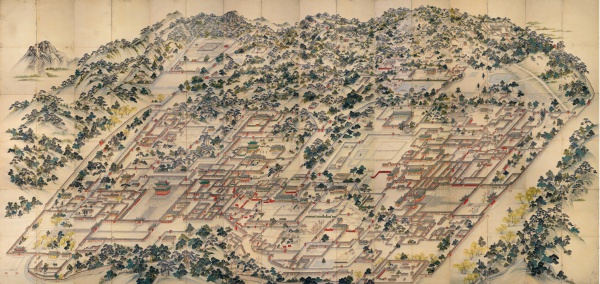Facts About Donggwoldo
"Donggwoldo" is a magnificent Korean painting from the early 19th century that offers a rare glimpse into the royal palaces of Changdeokgung and Changgyeonggung during the Joseon Dynasty. This artwork presents a panoramic view of the palaces, beautifully nestled among mountains and hills.
Two surviving versions of this masterpiece can be found at the Korea University Museum and the Dong-A University Museum. Its significance is so profound that it has been designated the 249th National Treasure of South Korea. The painting is displayed on a folding screen made from paper, silk, and wood, dating back to between 1826 and 1830. Many believe it was created by a skilled royal painter from Dohwaseo.
While "Donggwoldo" might not be celebrated for its artistic elegance, its true value lies in its historical significance. It provides detailed insights into the layout and features of Korean royal palaces from that era, making it an invaluable resource for researchers and historians. This painting played a crucial role in restoration projects, such as the 2012 restoration of the Buyongjeong pavilion in the rear garden of Changdeokgung.
For those interested in delving deeper into the story behind "Donggwoldo" Han Yeong-u's book "Donggwoldo, Painting of Eastern Palace" is an excellent resource that offers more comprehensive insights into this remarkable piece of Korean art history.

 North Korea
North Korea